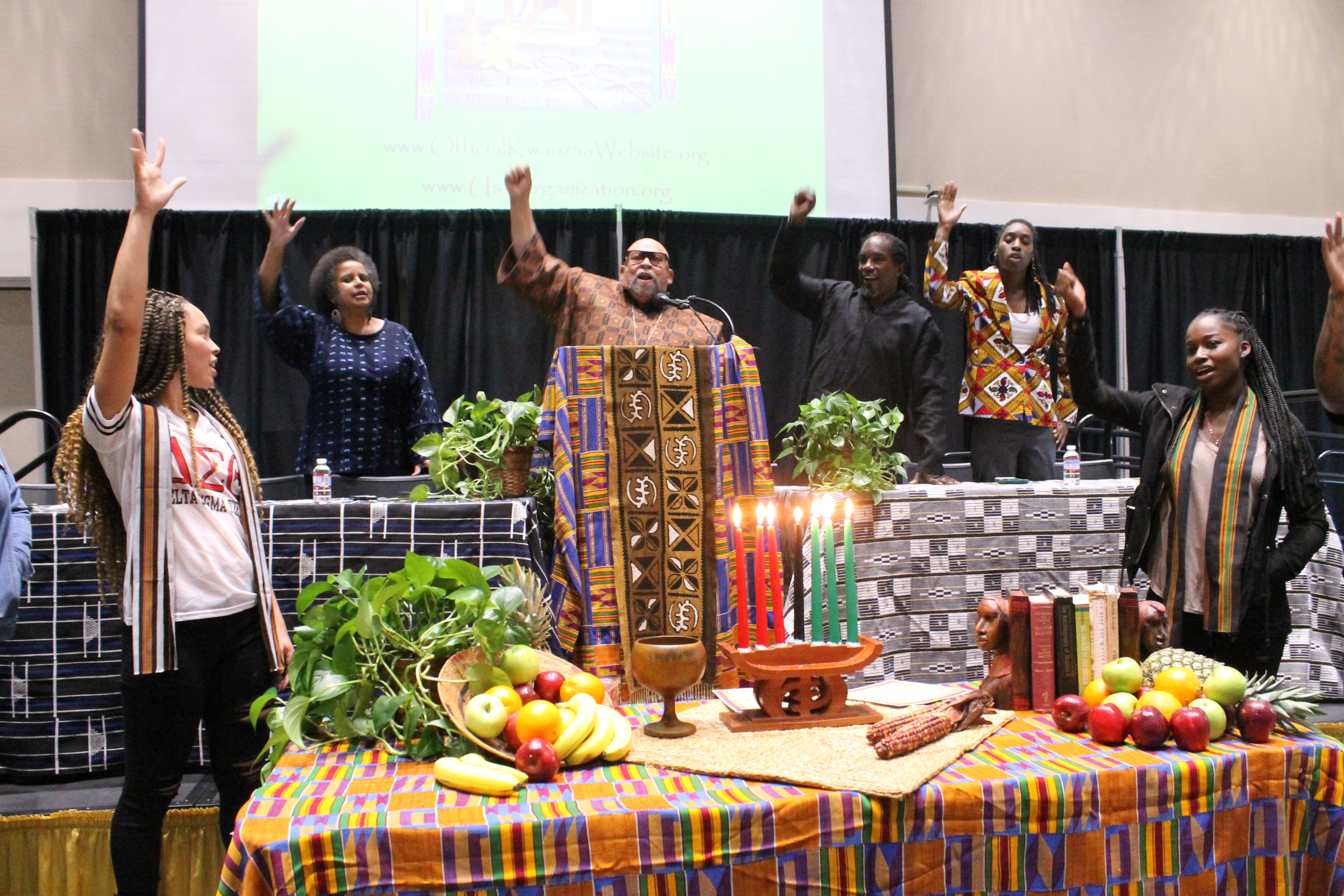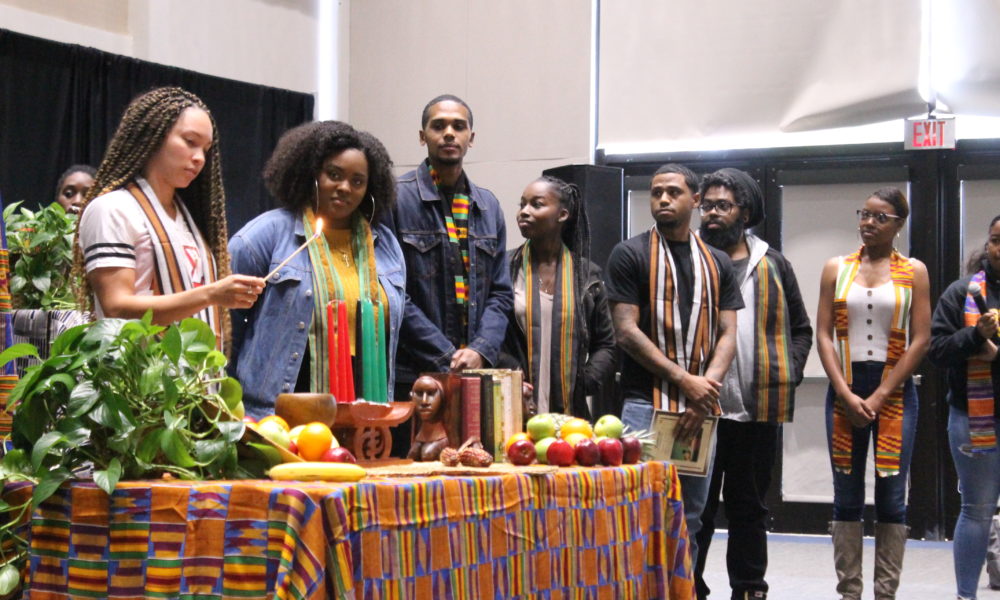As Christmas wraps up for the year, Lindsay White and her two children begin setting up their Kinara, the Kwanzaa wooden candle holder that marks the beginning of the annual celebration of pan-African American heritage.
One candle is lit each day with seven representing the Nguzo Saba, or the seven principles, in a week-long remembrance of ancestors and culture celebrated Dec. 26 to Jan. 1.
“Even as a young girl I grew up celebrating Kwanzaa so this is something that I’ve wanted to continue,” White said. “What drew me to the holiday is that it’s truly a collective celebration.”
Kwanzaa is derived from the Swahili phrase “matunda ya kwanza” meaning first fruits of the harvest. Maulana Karenga, came up with the idea for Kwanzaa in the ‘60s.
“Can you imagine that a young black man in 1966 would say ‘we need a holiday. Us Black people, we’ve done so much we need to celebrate that,’” said Chimbuka Temba, administrator support coordinator of Africana studies.
Enlarge

Anna Karkalik/Daily Forty-Niner
Now the department chair of the Africana studies and the creator of Kwanzaa, Karenga added an extra “a” to the end of the word to include all seven children at the first celebration at the African American Cultural Center in 1966.
The annual celebration of family, community and the African-American culture is based on seven principles: umoja (unity), kujichagulia (self-determination), ujamaa (cooperative economics), nia (purpose), kuumba (creativity) and imani (faith).
On each day of Kwanzaa, observers perform rituals that represent one of the seven principles. White gives the example of supporting a Black-owned business for cooperative economics and spending quality time with family on the day of unity.
“It’s an opportunity to learn where my people came from and also to show respect and remembrance of the past,” White said.
Kwanzaa was created by Karenga around the time of the civil rights movement as a display of defiance and to give Black people a holiday to celebrate their accomplishments throughout history.
“Kwanzaa is a product of self-determination,” Karenga said. “We didn’t ask permission (to create Kwanzaa), we didn’t go to the government we declared it. We declared that we were going to celebrate ourselves.”
Third-year civil engineering major Bethlehem Gezahegne said the holiday is a great way for other ethnicities to learn about African-American culture.
“I didn’t learn about the true workings of the holiday until college; they don’t really teach in-depth about it,” Gezahegne said.
Some students compared the holiday to Hanukkah, the Jewish celebration of the redirection of the Second Temple in Jerusalem.
“All you hear is Christmas music but you never really hear Jewish music or Kwanzaa music,” said Kaylee Richards, a third-year communications major. “Overall I would say that it’s a lack of knowledge.”
However, around 40 million people in the world celebrate the annual holiday in countries such as South Africa, Nigeria, South America, France and Russia and is not just for people of African-American descent, according to Karenga.
“Kujichagulia (self-determination), the second principle, is a constant calling of commitment of striving and struggling,” Karenga said. “We strive for excellence. We strive for good in the world.”




